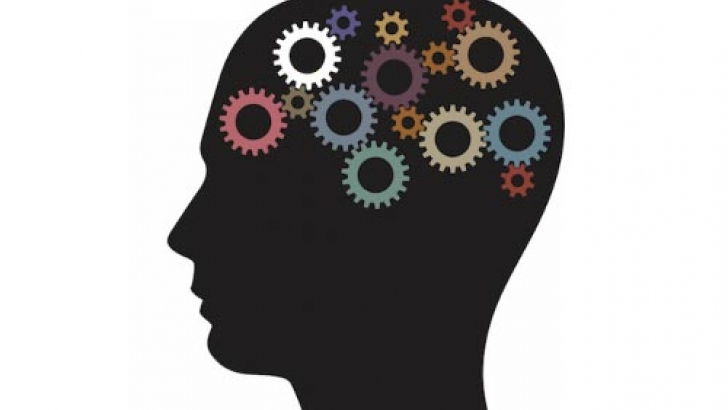
Author: Alex Kohn, M.A.
Children and adolescents around the world have endured difficulties during the past year and a half adjusting to life during the COVID-19 pandemic. Specific to academics, youth have been uprooted from in-person learning, have had to adapt to remote learning, and have had to manage uncertainty regarding hybrid learning and transitioning back to in-person learning. It’s no wonder children, adolescents, and adults alike are experiencing increased anxiety during this time (Hawes et al., 2021).
From an evolutionary perspective, anxiety prepares our bodies to address threats, by fighting back, fleeing a situation, or freezing. Anxiety can manifest in many ways, including physiologically, cognitively, emotionally, and behaviorally. We may notice physical sensations of anxiety, which can include an increased heartbeat, sweating, feeling jittery/butterflies in our stomach, or tense muscles. We may also notice cognitive manifestations of anxiety, which can include worried thoughts about the future or generalized worries about various areas of life. Emotional and behavioral responses to anxiety might include experiencing secondary emotions (i.e., emotional responses to anxiety, which might include sadness, anger, guilt, or shame) and behavioral responses of avoidance or over-preparation.
While a certain degree of anxiety is important, as it alerts our bodies to potential threats and allows us to keep ourselves safe, too much anxiety can interfere with daily life. Increased anxiety can disrupt sleep, make communication in relationships difficult, and overall can complicate one’s ability to effectively manage daily activities. Being mindful of how anxiety manifests brings awareness to our experience and to the effect anxiety is having on us. Once we bring awareness to anxiety and recognize the effect it may (or may not) be having on our lives, we can then proceed and determine how to manage the anxiety.
Here are some tips to addressing back to school anxiety, likely exacerbated by the effects of the pandemic:
Open Discussions
Approach the new school year as an opportunity to hold open discussions with your family about how everyone is feeling (Kamran & Naeim, 2021). Create space to share how you are feeling and allow your child the same opportunity. Anxiety is uncomfortable and by having open conversations about the discomfort, we are diving into it, rather than shying away and avoiding it (which only acts as a reinforcer to anxiety!). Can we use this as an opportunity to notice what is going on and ask ourselves, “What am I feeling? What do I notice is going on inside my body and my mind?” Use this as an opportunity to discuss how anxiety manifests, what anxiety is telling us, and generate conversation around ways to effectively manage anxiety.
Maintain Structure
Structure and routine are key for children and adolescents. Structure might look like having a morning or afternoon routine, having a specific place where remote schoolwork or homework is completed in the home, and structuring the day to include time for assignments, breaks, meals, and other important daily tasks (Kamran & Naeim, 2021). Implementing structure can address anxiety, as structure and routines provide predictability and consistency for children and adolescents. Additionally, wherever possible, give children and adolescents the ability to make as many choices as they can and empower them to focus on activities they can do for themselves (Kang et al., 2020). This allows children to have a degree of control over their own daily choices.
Continue Supporting Typical Self-Care Routines
Try and maintain your and your child’s usual self-care routines, including attending appropriately to your nutrition, sleep hygiene, physical exercise/movement, maintaining regular social connections, and finding time to relax and have fun.
Practice Self-Compassion
Studies have shown that self-compassion is linked with psychological well-being, and intentional self-compassion practices are linked to lower levels of anxiety (Harwood & Kocovski, 2017). Practice self-compassion through listening to a guided practice (e.g., on www.self-compassion.org) or engaging in an exercise, such as talking to yourself as how you would talk to a friend (https://self-compassion.org/exercise-1-treat-friend/) or engaging in a self-compassion break (https://self-compassion.org/exercise-2-self-compassion-break/). Model self-compassion for your child by practicing together and openly discussing the importance of acknowledging pain and difficulty and addressing it in a balanced, nonjudgmental way.
Anxiety is adaptive to a certain extent, so we want to remind ourselves and our children that we are not trying to complete get rid of all anxiety. However, when anxiety becomes overwhelming and is interfering with daily life, we want to take a step back and figure out how we can best address it. Remember, children and humans in general are resilient; we can find ways to effectively manage anxiety and modeling this for children play an important role in helping them manage anxiety.
References:
Harwood, E. M., & Kocovski, N. L. (2017). Self-compassion induction reduces anticipatory anxiety among socially anxious students. Mindfulness, 8(6), 1544-1551. https://doi.org/10.1007/s12671-017-0721-2
Hawes, M. T., Szenczy, A. K., Klein, D. N., Hajcak, G., & Nelson, B. D. (2021). Increases in depression and anxiety symptoms in adolescents and young adults during the COVID-19 pandemic. Psychological Medicine, 1-9. https://doi.org/10.1017/S0033291720005358
Kamran, A., & Naeim, M. (2021). Managing back to school anxiety during a COVID-19 outbreak. The Journal of Nervous and Mental Disease, 209(4), 244-245. https://doi.org/10.1097/NMD.0000000000001313
Kang, Y. Q., Lim, T. S., Ragen, E. S., Tan, M. Y., & Aishworiya, R. (2020). Managing children’s anxiety during COVID-19 pandemic: Strategies for providers and caregivers. Frontiers in Psychiatry, 11, 1-4. https://doi.org/10.3389/fpsyt.2020.552823
